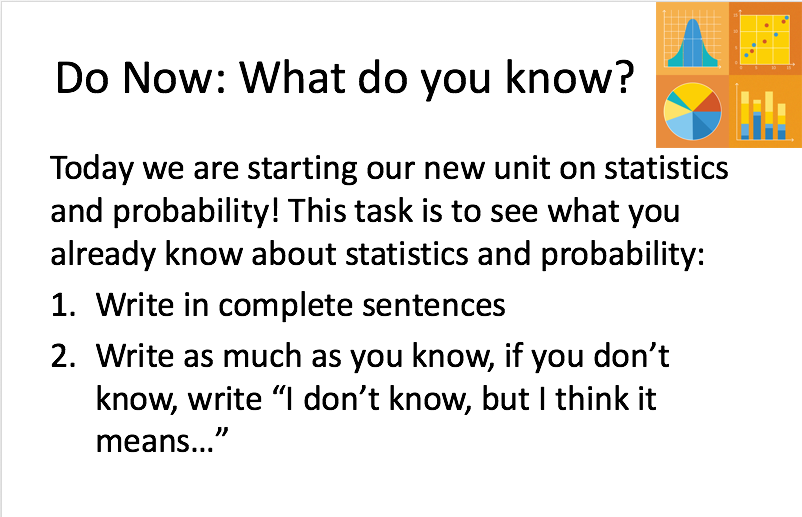Qualitative Growth
QUALITATIVE GROWTH OVERVIEW
While Algebra II is a highly quantitative subject, I regularly assess student understanding through qualitative writing assignments. Analytical writing place an emphasis on higher order thinking, as students are challenged to write with clarity and precision. I assign qualitative writing assignments because through writing, students internalize and communicate their learning. Through their writing, students define what they have learned, draw connections between mathematical concepts, and propose various applications. By writing about Algebra II, students increase their retention and mastery of Algebra II topics, and also practice the college-level skill of explanatory writing.
Please scroll down or click on the table of contents below to learn more about how my students achieved quantitative, dramatic academic growth on the statistics and probability unit of our Algebra II Curriculum.
TABLE OF CONTENTS
Beginning-of-Unit Writing Assignment
End-of-Unit Writing Assessment
Teacher Reflection
While Algebra II is a highly quantitative subject, I regularly assess student understanding through qualitative writing assignments. Analytical writing place an emphasis on higher order thinking, as students are challenged to write with clarity and precision. I assign qualitative writing assignments because through writing, students internalize and communicate their learning. Through their writing, students define what they have learned, draw connections between mathematical concepts, and propose various applications. By writing about Algebra II, students increase their retention and mastery of Algebra II topics, and also practice the college-level skill of explanatory writing.
Please scroll down or click on the table of contents below to learn more about how my students achieved quantitative, dramatic academic growth on the statistics and probability unit of our Algebra II Curriculum.
TABLE OF CONTENTS
Beginning-of-Unit Writing Assignment
End-of-Unit Writing Assessment
Teacher Reflection

